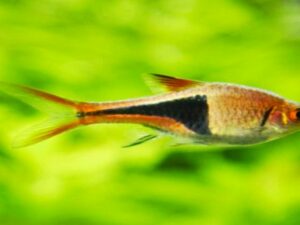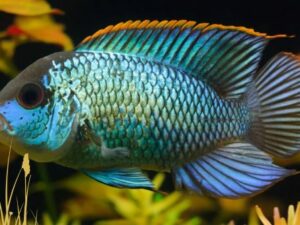Common Plecos are one of the most popular types of Plecos in aquarium fishes. They are easy to care for and thrive in a wide range of water conditions. But what do you need to know before you add one of these fish to your aquarium? So we will look at what they are, their care, and breeding.
Table of Contents
Species Summary
Hypostomus plecostomus, commonly called Common Plecos and Suckermouth Catfish, is a large and diverse group of catfish found in tropical and subtropical regions worldwide. They are popular aquarium fish due to their size, easy-care, and wide range of water conditions that they can tolerate.

There are many different species of Common Plecos, and they vary in size from just a few inches to well over twenty inches in length. They can be found in various colors, but most are brown or black with a lighter underside.
One of the most Common Plecos is the Common Pleco (Plecostomus annectens), which is found in Central and South America. This fish can grow up to 20 inches in length and is popular for larger aquariums.
Related: BRISTLENOSE PLECO CARE GUIDE: LIFESPAN, DIET, SIZE & ALL
Common Pleco Lifespan
The typical Common Pleco lifespan is 10-15 years, but they can sometimes live up to 20 years or more. They have a longer lifespan than most other common aquarium fish.
The quality of their care and diet will greatly impact their lifespan.
Related: RUBBER LIP PLECO 101: BEST DETAILED CARE GUIDE
Appearance
Common Plecos are large, brown, and blackfish with a lighter underside. They can grow up to 20 inches in length and are a popular choice for larger aquariums. Like catfish, they have a barbel (a fleshy, sensory organ) on their chin that they use to find food.
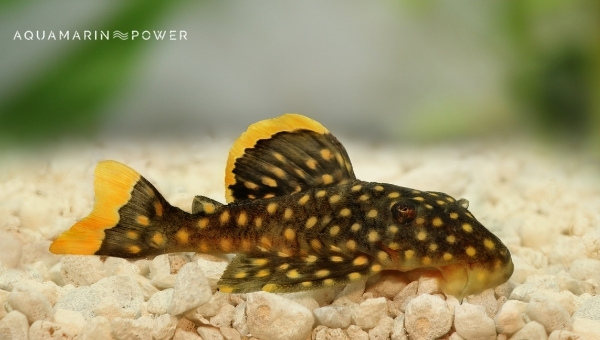
The color of a Common Pleco can vary depending on the species, but most are brown or black with a lighter underside.
The body of the Common Pleco is stocky, with a wide head and small eyes. They have a large mouth to suck up food from the substrate. They have a long, whip-like tail to propel themselves through the water.
Common Pleco has a number of dorsal (back) and ventral (belly) fins for stability and movement. This fish is a member of the Loricariidae family, a large and diverse group of catfish found in tropical and subtropical regions around the world.
Related: PEACOCK CICHLID 101: FACTS, CHARACTERISTICS & CARE GUIDE
Habitat
Common Plecos are found in a variety of habitats, including rivers, lakes, and ponds. They are very adaptable fish and can tolerate a wide range of water conditions.
They are most commonly found in Central and South America, but they can also be found in Africa, Asia, Europe, Northeastern Brazil, Trinidad, and Tobago.
Related: VAMPIRE PLECO (L-240): DETAILED CARE GUIDE
Average Common Pleco Size
The average Common Pleco size is about 10-12 inches, but they can grow up to 20 inches in full wild length. Some specimens may be smaller or larger, depending on the species. When kept in an aquarium, they will typically reach a size of 6-8 inches.
When buying, a smaller Common Pleco would be perfect for a 55-gallon tank or larger. Buying a large one may require too much space.
Breeding
Although Common Plecos can be bred in captivity, it is not common. In order to breed them, you will need to provide them with a large tank and heavily planted environment. You will also need to give them a lot of food, as they will need to eat a lot to produce eggs. The eggs will hatch in about a week.
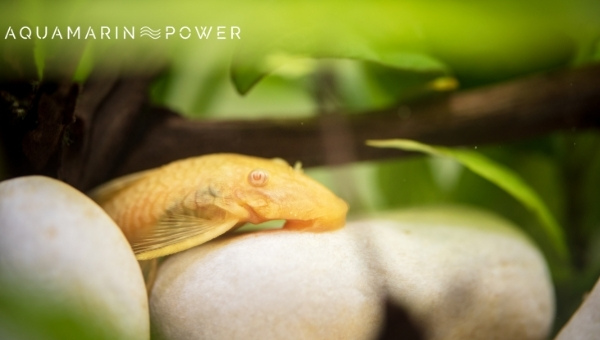
Breeding Common Plecos is not an easy task, but it can be done with a lot of patience and effort. If you successfully breed them, you will have a lot of care for the fry.
Once you have a pair of Common Plecos that have been successfully bred, it is important to keep them together. If you separate them, the female may eat her eggs or the fry.
Common Pleco care Guide
Common Pleco care is relatively easy, and they will thrive in a wide range of water conditions.
One of the best things about Common Plecos is that they have hearty appetites. They will eat just about anything, so you don’t have to worry about them not getting enough to eat. A common Pleco’s stomach will be visibly distended after eating. This is normal, and you should not be alarmed.
These are some care tips to keep your Common Pleco healthy and happy.
Related: BLACK GHOST KNIFE FISH 101: BEST DETAILED GUIDE & MORE
Food & Diet
Common Plecos are omnivorous and will eat a variety of foods. They will appreciate a diet that includes both meaty and plant-based foods.
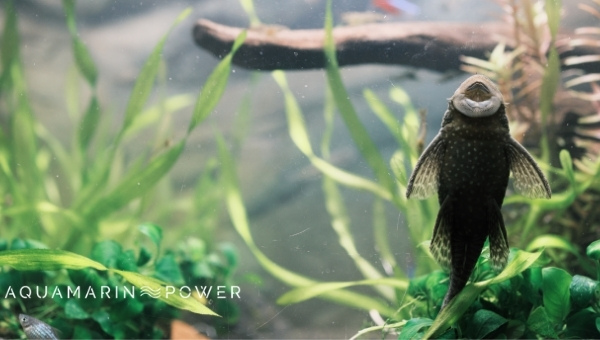
You can feed them various foods, including live or frozen brine shrimp, bloodworms, krill, earthworms, pellets, flake food, vegetables, and a good algae eater.
When choosing a diet for your Common Pleco, make sure to consider the size of the fish. A smaller Common Pleco would be perfect for a diet that includes small pellets or flakes, while a larger Common Pleco would appreciate a diet that includes larger pellets or flakes and live or frozen food.
Ensure to keep an eye on the water quality when feeding Common Plecos, as they are very sensitive to changes in pH and water hardness.
To keep your Common Pleco healthy and happy, provide it with a diet that includes both meaty and plant-based foods.
Tank Size
Adult Common Plecos require a tank size of at least 55 gallons. They can grow up to 18 inches in length, so they need a lot of space to swim.
When choosing a tank for Common Pleco, consider the size of the fish. A smaller Common Pleco would be perfect for a 55-gallon tank or larger. Buying a large one may require too much space.
Water Parameters
The water parameters for a Common Pleco should be as follows:
- Temperature: 72-86 degrees Fahrenheit
- pH: 6.5-7.5
- Ammonia: 0 ppm
- Nitrite: 0 ppm
- nitrate: 5-40 ppm
- Alkalinity: 80-200 ppm
- Carbonate hardness: 10-30 ppm
- General hardness: 100-300 ppm
- Water hardness: Up to 25 dGH
Common Plecos can tolerate a wide range of water conditions, but they will do best in soft, acidic water. These freshwater fish comes from the Amazon River basin, where the water has a low ph.
It’s very important to keep an eye on water parameters when keeping Common Plecos, as they are very sensitive to changes in pH and water hardness.
Setting Up The Rest Of The Tank
When setting up the rest of your tank for a Common Pleco, you will need to provide plenty of hiding places. This fish is a nocturnal predator and will spend most of the day hiding in caves or under rocks. You can provide some decorations made out of rock or wood, but make sure they are firmly anchored in the substrate so they don’t fall over and injure the fish.
Traditional Style Tank
A traditional-style tank is perfect for a Common Pleco. This type of tank has a lot of open space at the bottom and offers plenty of hiding places for the fish.
Natural Style Tank
A natural-style tank is also a good option for a Common Pleco. This type of tank has a lot of plants and hiding places, which the fish will appreciate.
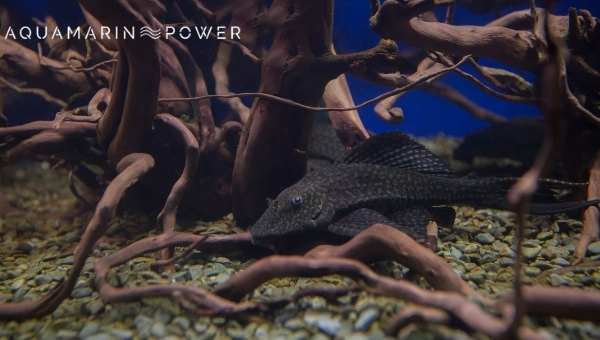
Make sure to use a good filtration system, as these fish produce a lot of waste. You can use an Undergravel filter to help keep the water clean. You will also need to provide a heater, as Common Plecos require a warm water environment. A temperature of 72-86 degrees Fahrenheit is ideal.
When choosing a tank for your Common Pleco, make sure to consider the size of the fish and the size of the tank. A smaller Common Pleco would be perfect for a 55-gallon tank or larger. Buying a large one may require too much space.
These fish are messy eaters and will produce a lot of waste. Make sure to have a good filter in your tank to keep the water clean. Although Common Plecos are tolerant of a wide range of water conditions, they will do best in soft, acidic water.
Cleaning The Tank
It is important to clean your tank regularly to keep your Common Pleco healthy and happy. Remove any uneaten food or waste from the bottom of the tank. You can use a siphon to suck up the waste and then release it outside the tank.
If algae are growing in the tank, you can use an algae scraper to remove it. Be careful not to scrape the sides of the tank, as this could damage the fish.
Make sure to change at least 25% of the water in the tank every week. This will help keep the water clean and healthy for your fish.
When cleaning your tank, always use a de-chlorinator to remove any chlorine or chloramine from the water. These chemicals can be harmful to fish.
Common Potential Diseases
There are a few diseases that can affect Common Plecos. One of the most common is Ichthyophthirius multifiliis, more commonly known as Ich. This is a parasitic disease that can be deadly if left untreated.
Symptoms of Ich include white spots on the body and fins, scratching against objects in the tank, and loss of appetite. If you suspect your Common Pleco has Ich, you should quarantine it and treat it with a medicated fish food or medication.
Another common disease that can affect Common Plecos is bacterial infections. These can be caused by various factors, including poor water quality, injuries, and stress.
Symptoms of bacterial infections include redness or inflammation around the wound, swelling, and excessive mucus production. If you suspect your Common Pleco has a bacterial infection, you should treat it with antibiotics.
Dropsy is a potentially fatal disease that can affect Common Plecos. Symptoms of Dropsy include a bloated body, scales standing on end, and protruding eyes. There is no specific treatment for Dropsy, and it is often fatal.
Ensure to keep an eye on water quality when keeping Common Plecos, as they are very sensitive to changes in pH and water hardness.
Foods To Avoid
There are a few foods you will want to avoid feeding your Common Pleco. These include raw fruits and high-fat foods, which can cause digestive problems and lead to obesity.
Behaviour & Temperament
Common Plecos are generally peaceful fish and will get along well with other fish in the tank. However, they can be territorial and may fight with other Common Plecos if they are kept in the same tank.
These fish are nocturnal and will spend most of the day hiding in plants or caves. They will come out at night to feed.
Common Plecos are very active fish and require a lot of space. They will need a tank that is at least 55 gallons or larger.
When choosing a tank for your Common Pleco, make sure to consider the size of the fish and the size of the tank. A smaller Common Pleco would be perfect for a tank that is 55 gallons or smaller, while a larger Common Pleco would require a tank that is at least 55 gallons or larger.
Because they are territorial and may fight with other Common Plecos if they are kept in the same tank, it is best to keep only one Common Pleco per tank. Make sure to have a good filter in your tank to keep the water clean.
Tank Mates
Because of their size and active nature, Common Plecos are best kept with other large fish. They can be kept with other peaceful fish, such as cichlids, loricariid, and catfish. Common Plecos are not compatible with smaller fish and should not be kept with them.
When choosing tank mates for your Common Pleco, make sure to consider the size of the fish and the size of the tank. Common Plecos can be kept with other large fish.
These are some good mates for the Common Pleco:
- Cichlids: African Cichlids, they are generally peaceful fish and make good tank mates for Common Plecos.
- Loricarid: Loricarid are a family of fish that come from South America. They are generally peaceful fish and make good tank mates for Common Plecos.
- Catfish: Catfish are a large and diverse family of fish that come from all over the world.
- Angelfish: Angelfish are a popular pet fish that come from South America. They are generally peaceful fish and make good tank mates for Common Plecos.
- Oscar fish: Oscar fish are a large and aggressive cichlid that come from South America.
- Black Skirt Tetra: Black Skirt Tetras are a popular fish that come from South America. They are generally peaceful fish and make good tank mates for Common Plecos.
- Dwarf Gourami: Dwarf Gourami are a popular fish that come from Asia. They are generally peaceful fish and make good tank mates for Common Plecos.
When choosing tank mates for your Common Pleco, your best bet is to go with other large, peaceful fish. Avoid keeping Common Plecos with smaller fish, as they may become prey. Consider the size of the fish and the size of the tank when making your decision. Make sure to have a good filter in your tank to keep the water clean.
Advantage Of Having Them In Your Tank
The advantage of having a Common Pleco in your tank is that they are peaceful fish that will help to keep the tank clean. They are hardy fish and can tolerate a wide range of water conditions. They are also large fish and will help keep the tank bottom clean.
Disdvantage Of Having Them In Your Tank
The disadvantage of having a Common Pleco in your tank is that they can grow up to 20 inches long and require a lot of space. They are also very active fish and can be messy. They will need a good filter to keep the water clean.
Conclusion
If you are looking for a good algae eater for your tank, the Common Pleco is a great option.
They are low-maintenance fish, meaning they do not require much attention. They can be kept with other large fish and make good tank mates. Although breeding them is not easy, it can be done with a lot of patience and effort.
Seeing this large aquatic creature in person is definitely an experience you will never forget. If you are interested in keeping Common Plecos, do your research first to learn all about their needs. You can have these amazing fish swimming in your tank with a little effort!


